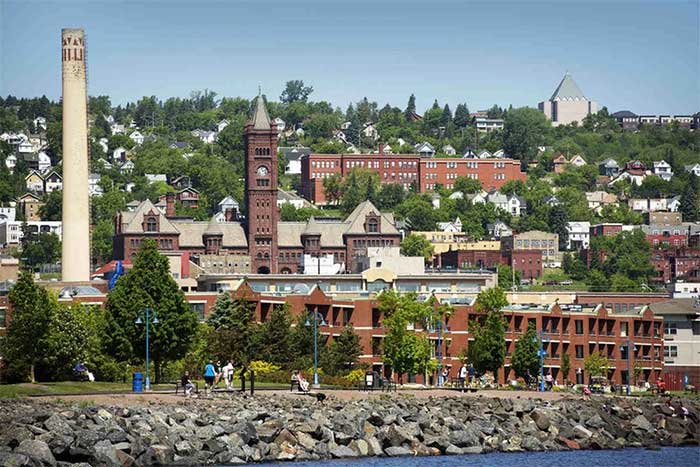As natural disasters become increasingly frequent and unpredictable around the globe, many individuals are choosing to leave their homes for regions with stable, temperate climates.
In response to the rising occurrence of natural disasters, the concept of “climate refuge” has emerged.
Climate Migration
Before September 2017, Dianiz Roman and Wilfredo Gonzalez had no intention of leaving their hometown of Aguadilla, located in the western part of Puerto Rico. However, everything changed after Hurricane Maria struck the area.
The couple’s workplace, a funeral home, gas station, and the entire city were devastated by the hurricane. Approximately 3,000 lives were lost. The impact of Hurricane Maria on the people and property was so significant that the city of Aguadilla is still struggling to rebuild today.
Living amidst the devastation, Dianiz and Wilfredo found it difficult to secure supplies, drinking water, and food. Consequently, after the disaster passed, they decided to relocate to the city of Buffalo, New York, which is thousands of kilometers north of Aguadilla. Gonzalez’s sister had moved here a year earlier and had spoken highly of the city.
Since Hurricane Maria, thousands have left Aguadilla for Buffalo, where there is a Puerto Rican community. The residents of Aguadilla are drawn to Buffalo because months before Hurricane Maria hit, the mayor of Buffalo declared it a “climate refuge city” due to its lower susceptibility to climate change impacts.
Since then, Buffalo has ramped up advertising its benefits, including an average temperature of a comfortable 21.5 degrees Celsius in July. Anticipating an increase in population, especially after climate-related disasters, the city modified its zoning regulations in 2017 to enhance the development of corridors around the urban center and upgrade its deteriorating drainage infrastructure.
Similar to Buffalo, many other cities such as Cleveland, Ohio; Ann Arbor, Michigan; and Duluth, Minnesota in the U.S., as well as other countries, are planning to accommodate a large influx of climate migrants, also known as “climate refugees.” These groups are influenced by climate change in their decisions about where to settle.
Those “climate migrants” are seeking out “climate refuges,” a term that has gained traction in recent years. These are understood to be areas where extreme weather events are rare and are located near freshwater sources. In the U.S., climate refuge cities are often found in the northern regions, as major storms are increasingly affecting the lives of residents in the southern and western parts of the country.
According to the National Relocation Monitoring Center, in 2022, 675,000 Americans were forced to leave their homes due to disasters. Approximately 13 million residents in the Southeastern U.S. may have to relocate by the end of this century due to tornadoes moving east into densely populated areas. Cities like Buffalo and Duluth are thus becoming climate refuges.

Duluth, Minnesota, is considered a safe place to live.
Climate Change Resilient Cities
Previously, as factories began closing in the 1970s, residents of Buffalo moved away in search of work, leaving their homes and the city behind. As a result, Buffalo has retained a simple, unpretentious charm, with spaces being repurposed for climate change mitigation efforts.
Meanwhile, Cleveland, located on the southern shore of Lake Erie, currently has about 30,000 vacant lots available to accommodate the needs of those displaced by disasters. Detroit, where two-thirds of the population left after the industry crisis in the 1950s, is not only not abandoned but is also improving its infrastructure to welcome tens of thousands of new residents.
Similarly, Duluth, known for its winds and white snow, has gained a reputation as a refuge for those fleeing the impacts of climate change. The city’s cold weather is appealing to “climate migrants” who are unable to endure a warming planet.
Having moved from California to Duluth nearly four years ago, Christina Welch shared: “I left California to escape wildfires. In Duluth, there are cold winds, frozen lakes, and much cleaner air. There are also forests; I only need a few minutes to drive out of the city to reach the woods. That makes me feel comfortable and at ease.”
Although the number of such cities is still limited, the U.S. government and federal authorities are planning to restore and promote local refuge models. One important aspect is ensuring the current climate of these areas is maintained while enhancing land use for population growth.
In cities already affected by climate change, they will implement “climate change mitigation” models. Consequently, cities are exploring methods to modernize the existing housing supply to combat the cold in winter and the heat in summer.
Mr. Nicholas Rajkovich, who works at the School of Architecture and Planning at the University of Buffalo, stated: “Revitalizing the urban core will be central to building a region that can better withstand climate change.”
However, many scientists argue that believing a city will be immune from the impacts of climate change is inaccurate. Like every area of the world, these current climate refuge cities will one day also face the effects of climate change. The issue is one of timing. The process of “climate migration” if not closely regulated, could accelerate climate change in these ideal cities.





















































